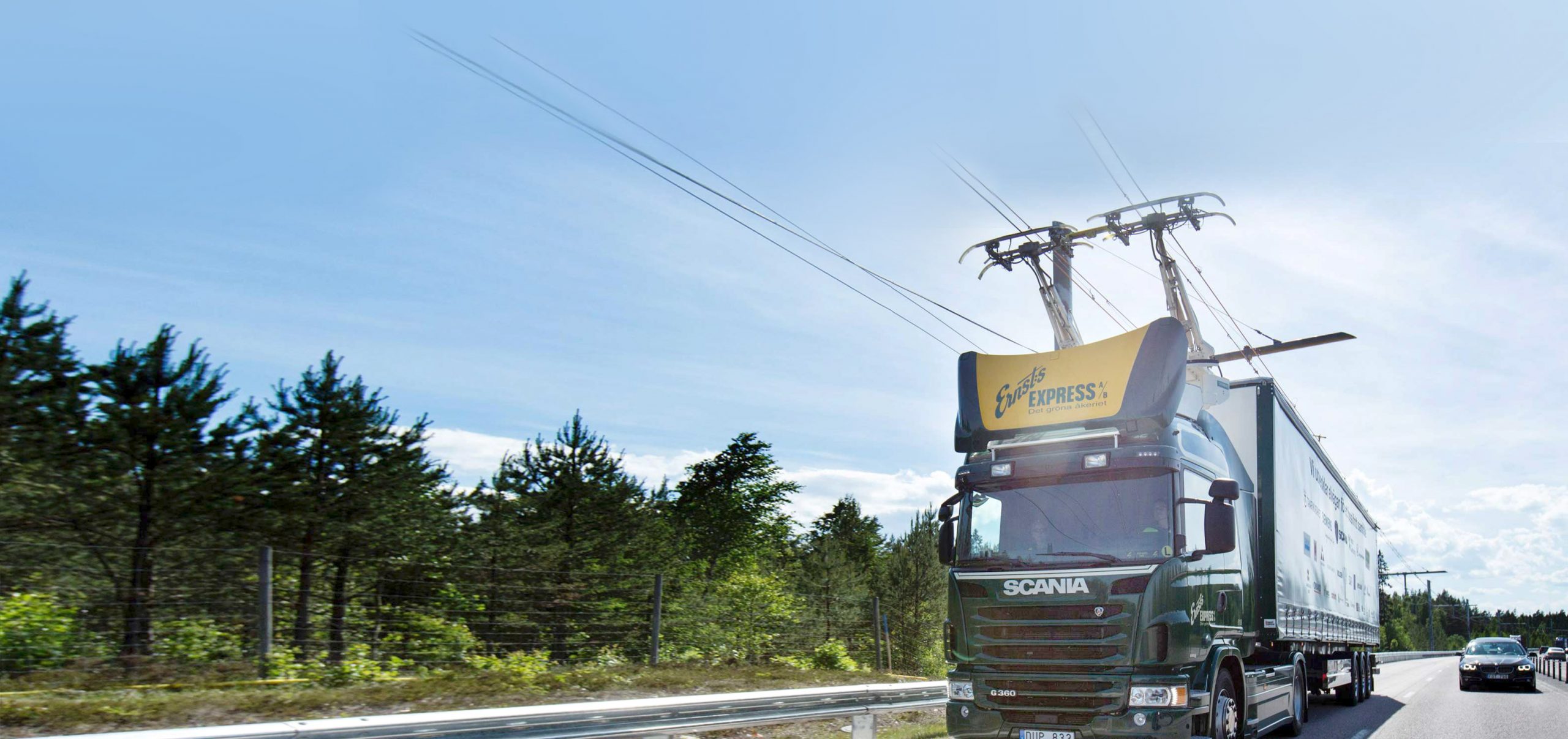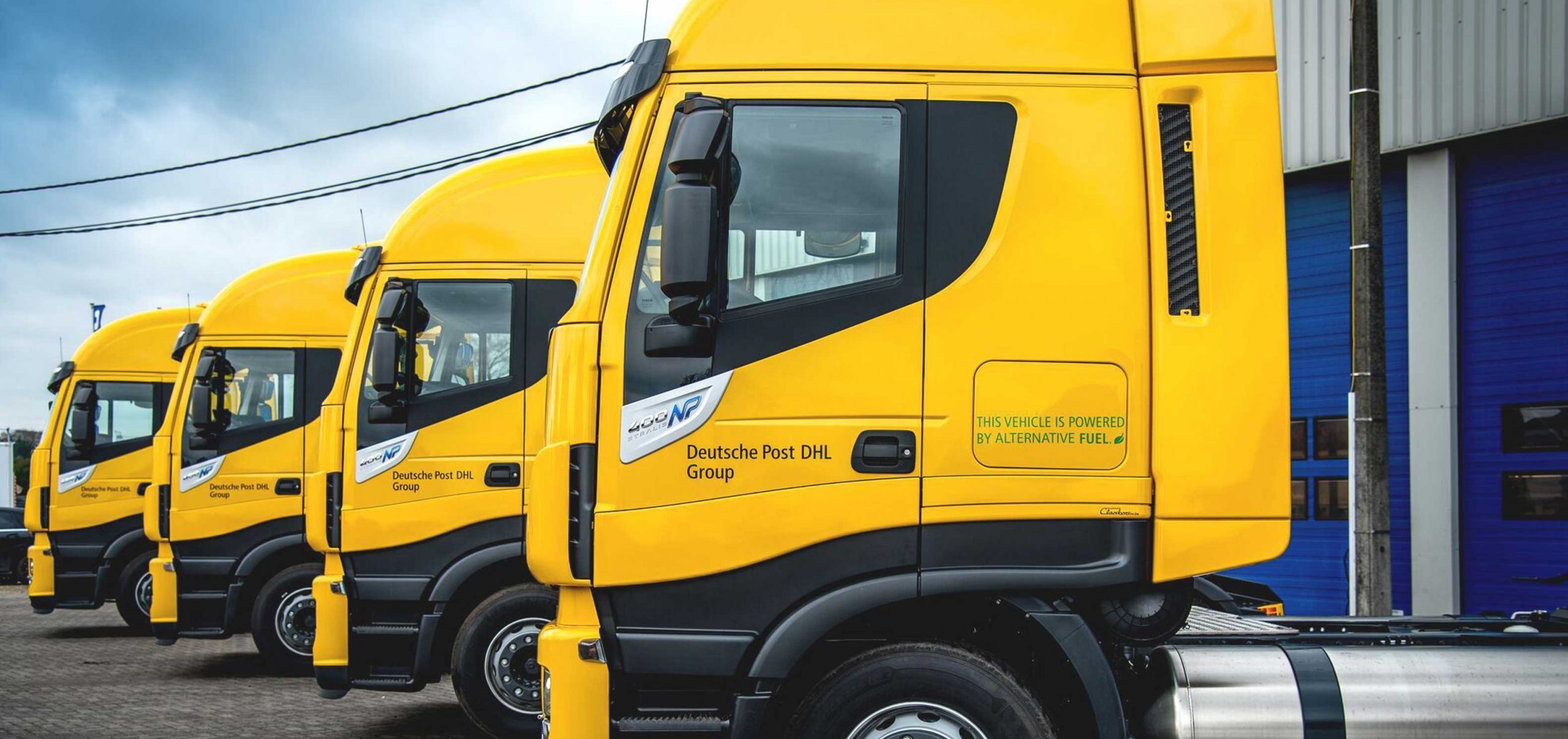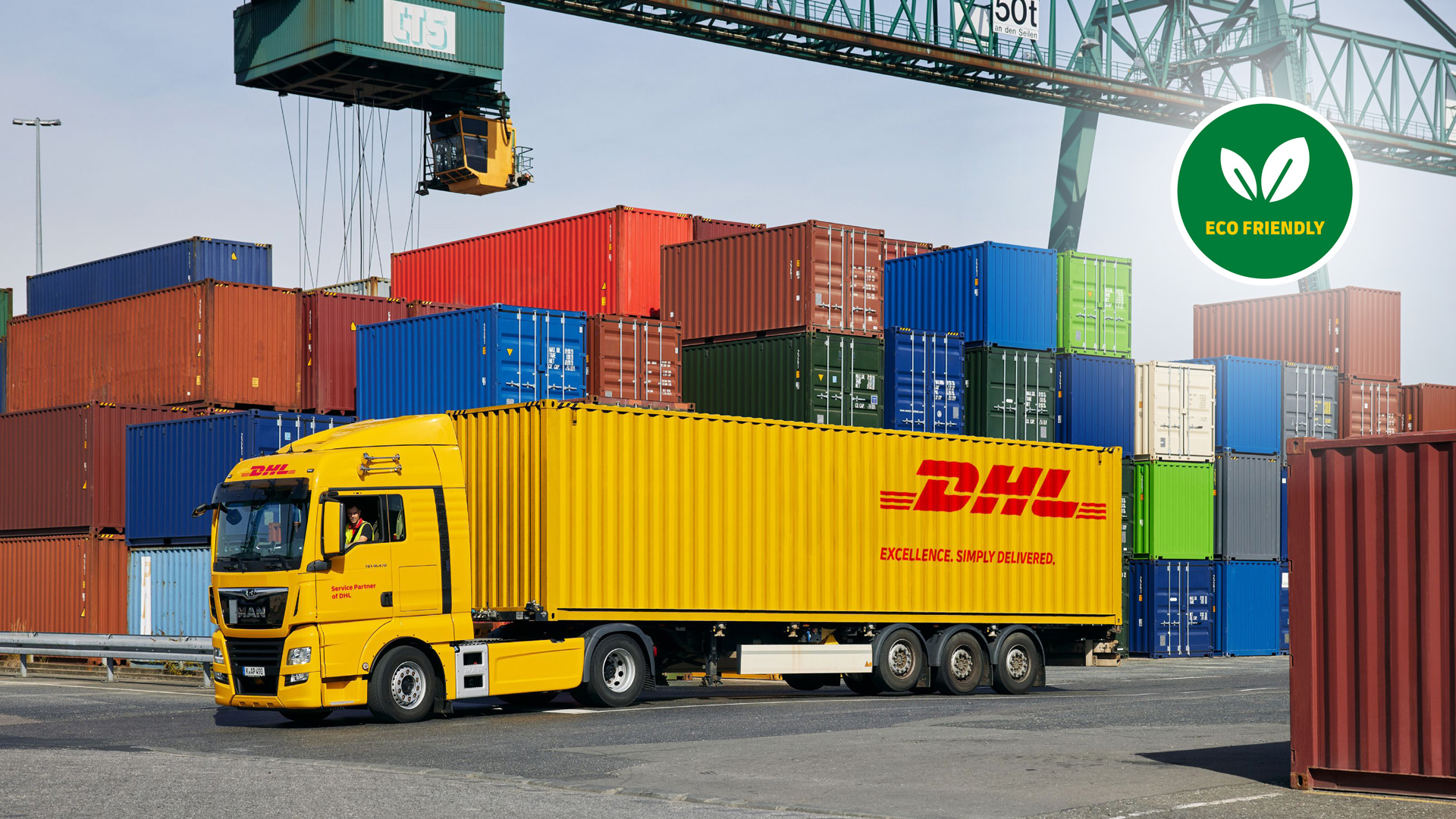
The global exchange of goods is increasing and with it the importance of transport logistics as the backbone of modern economic life. However, this also means greater responsibility for its share of global greenhouse gas emissions. The different types of freight contribute to this to varying degrees. Our overview reveals how environmentally friendly they currently are, and which technologies can be applied to realize sustainable freight services.
Road, Rail, Water, Air: Highly Disparate Shares of Total Emissions
It is inevitable that a lot of energy is needed to maintain global supply chains. Energy consumption can no longer be thought of without a mandatory addition: environmental sustainability.
Transport and logistics together account for around one fifth of global CO2 emissions – and the trend is rising. In 2022, the sector is estimated to have emitted a good seven billion tons of CO2. If we look at this share more closely, almost 30 percent is attributable to road freight, around 10 percent to the entire ship traffic, 11 percent to passenger and freight air transport, and only around 1 percent to rail freight and rail passenger transport.

These are absolute figures. This means that the low share of rail in total emissions is also related to the fact that much less goods are transported by rail than by truck. In the European Union, for example, 77 percent of freight transport was carried out by road and only 17 percent by rail in 2021. In relative terms, however, road freight transport still causes five times more CO2 emissions than rail transport.
Another perspective is that logistics, including warehouse and packaging logistics, contribute 5 to 15 percent of the emissions generated during the life cycle of a product. So, there is a huge savings potential waiting to be exploited through innovative green transport technologies. Our comparison shows how this can be achieved in the individual types of freight.
 Road Freight
Road Freight
Road freight is the primary contributor to pollutant emissions in transport logistics. Compared to a train, a truck consumes a lot of energy to transport comparatively few goods. For trucks with combustion engines, which will continue to dominate road freight in the medium term, direct emissions are an additional factor.
But there is a positive side to the currently weak eco-balance: in the road freight sector, much can be done to improve the overall ecological performance of transport logistics – by means of drive technology, the ratio of load to tractive effort, and intelligent route and load planning.
Drive Technology
In the short and medium term, bridging technologies are required to reduce emissions generated directly during transport.
Fuels that can replace diesel in the short term are:
- HVO: hydrotreated vegetable oil from renewable resources. HVO therefore qualifies as a renewable energy source and can be added to diesel or replace it. The implementation of HVO in driving operations is possible without technical modifications.
- (Bio) CNG: compressed natural gas with higher energy efficiency and thus lower emissions than diesel. CNG enables CO2 emission savings of up to 5 percent (fossil CNG) and up to 80-100 percent if Bio CNG is used.
- (Bio) LNG: liquid natural gas. LNG not only has better efficiency than diesel, but also accumulates more energy than CNG, which has a positive effect on the tank volume. LNG trucks will soon have a range comparable to that of diesel trucks.
In the medium term, electric propulsion is the technology of choice. Mature drive technologies are already available and there are no direct emissions from the vehicle. And an electric vehicle is CO2-neutral if green electricity is used. Currently used primarily for last-mile delivery, electromobility will also be a genuine option for heavy goods transport over long distances.
In the long term, hydrogen propulsion will contribute to the decarbonization of road freight. Hydrogen can be used both in fuel cell vehicles and in combustion engines. In both cases, the advantage is that there are virtually no harmful emissions. In addition, according to current knowledge, a greater range can be achieved with hydrogen drives than with electric engines. DHL Freight is actively involved in the development of applicable technologies.
Further Technologies and Solutions
One way to improve the sustainability of road freight transport starts with the ratio of load to tractive effort: LHVs have a better ratio than conventional trucks and thus lower emissions per ton kilometer. Autonomous driving can help reduce CO2 by harmonizing traffic flows. In addition, intelligent route and load planning, supported by modern technologies such as artificial intelligence and big data, help to use freight space in an energy-efficient way and minimize empty runs.
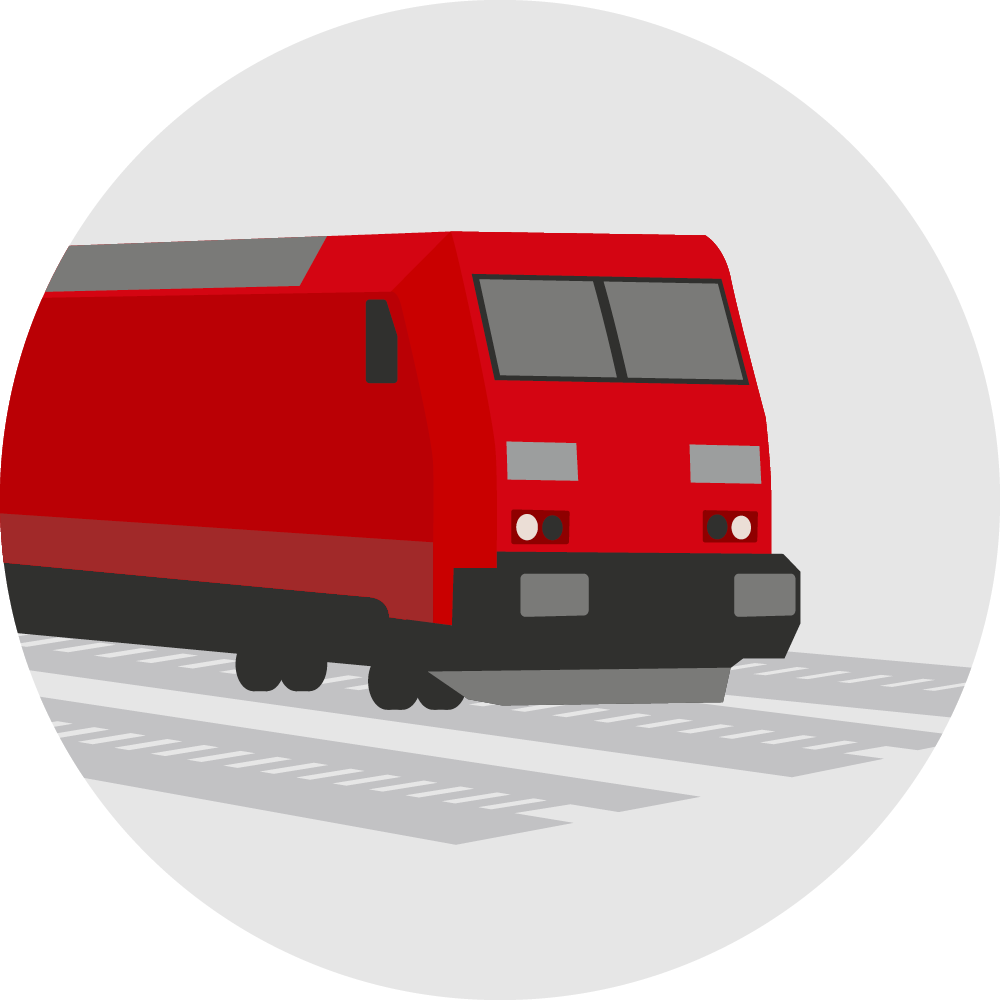 Rail Freight
Rail Freight
Rail freight is currently the most ecological option in logistics. Due to the better ratio of cargo to operating power and the high degree of electrification, rail produces less than one-fifth of the greenhouse gases per ton kilometer than road transport. This means that there are already hardly any direct emissions, and the faster the share of green electricity used to power freight trains increases, the sooner climate neutrality can be achieved.
But in rail freight, too, further technological developments can provide better energy efficiency and lower emissions. That said, the potential for savings is significantly lower than in road freight, as the technology is already very efficient. Effective contributions of rail to improving the eco-balance of overall transport logistics are:
- complete electrification of rail traffic
- comprehensive expansion of the rail infrastructure to enable rail to better meet land transport demand and to be more often an alternative to road freight
- extension of intermodal solutions that combine the environmental benefits of rail freight with the greater range of road freight in the last mile. A prerequisite for intermodal upgrading, however, is the expansion of the rail network.
 Sea Freight
Sea Freight
Sea freight allows the transportation of enormous quantities of goods over long distances. The ships used in ocean freight today are predominantly powered by large diesel engines and a mixture of heavy fuel and diesel oil. Heavy fuel contains non-combustible components that must be collected in tanks and disposed of as toxic waste.
Pollutant emissions from combustion are also considerable, with high levels of soot and sulfur – but: around 90 percent of global trade is carried out as sea freight, and in comparison to this, sea freight’s 10 percent share of total emissions from the transport and logistics sector is relatively low. Large container ships emit around 17 grams of CO2 per ton kilometer, and a large truck around 68 grams. Given the volumes transported, the direct environmental impact per container or per ton of bulk cargo is accordingly low – especially when compared to air freight. So is sea freight ecologically advantageous?
Only to a limited extent. For one thing, sea freight contributes to the waste in the sea or the oil on the beach. And the scrapping of old cargo ships is not without problems. Direct emissions from ships also need to be reduced: by slow steaming, improved propulsion technologies and fuels, and route planning – just as with land freight. The good old sail could also play a role again in shipping.
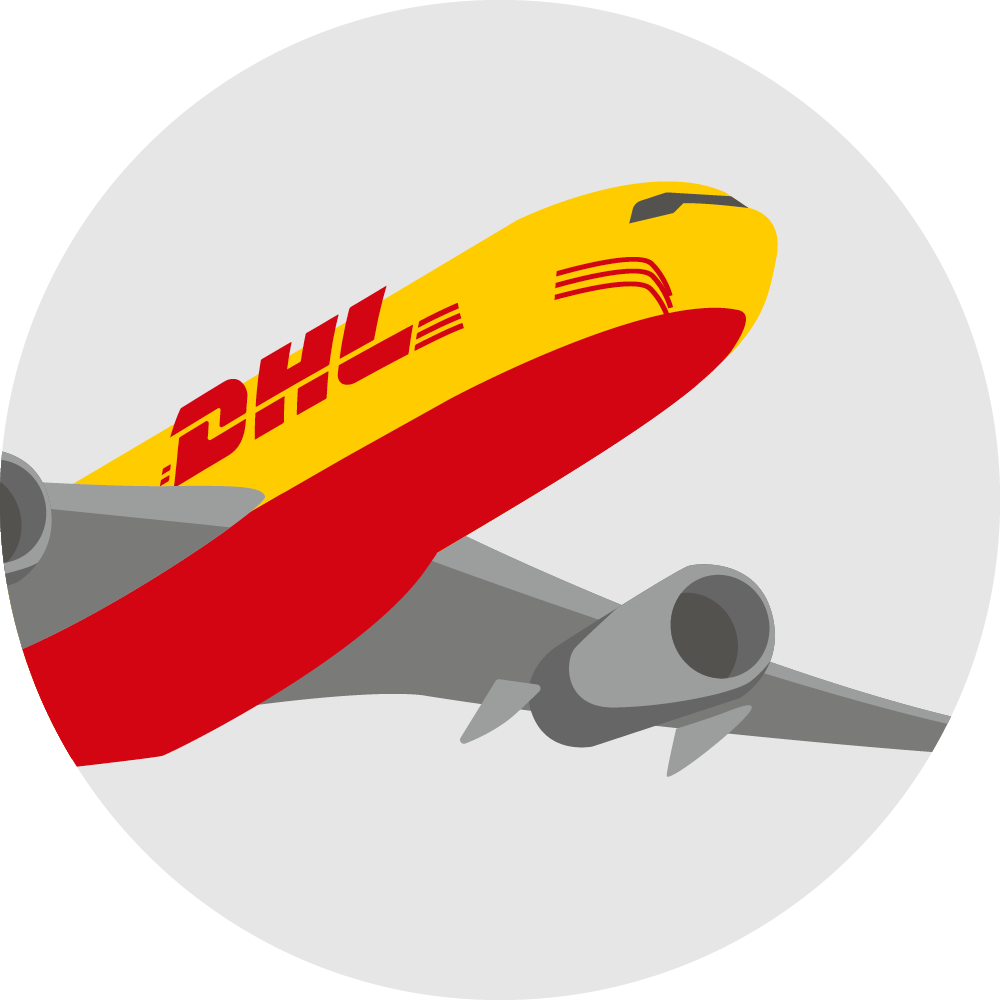 Air Freight
Air Freight
Aircraft emit the highest levels of pollutants per ton kilometer. The speed of air freight comes at an ecological price: a lot of energy is needed to get the goods into the air and fly them – more than any other mode of transport.
For smaller planes, the quantity of emissions could be reduced by using electric mobility. Such planes are now ready for the market, and DHL Express has already ordered twelve Alice e-cargo aircraft for delivery from 2024.
In the case of large aircraft, electric drives currently play no role for reasons of inadequate performance. Here, the focus is on fuels and the keyword is: sustainable aviation fuel (SAF). SAF is produced from non-fossil (biological and/or synthetic) raw materials and does not emit more CO2 during combustion than was absorbed during production. DHL Group has purchased over 830 million liters of SAF in 2022, which represents around 18.5 percent of global annual production.
In most cases, logistical requirements such as the properties of the freight or the transport route dictate the choice of transport mode: large quantities of goods can only be moved transcontinental by ship, urgent aid supplies in humanitarian logistics can only reach their destination quickly by air, and door-to-door deliveries are only possible by truck.
For sustainable logistics, it is therefore essential to optimize all modes of transport in ecological terms. DHL Freight strives to deploy more and more low-emission road vehicles and in the long term zero-emission vehicles eclusively, and to expand intermodal solutions. You can participate directly in this via the GoGreen Plus service.
Frequently Asked Questions
- How sustainable is road freight?
A truck consumes a comparatively large quantity of energy to transport small quantities of goods, and combustion engines produce direct emissions. With improved drive technology or intelligent route and load planning, the energy efficiency and ecological footprint of road freight can be enhanced. - How sustainable is rail freight?
In rail freight, very few greenhouse gases are produced per ton kilometer and, due to the high degree of electrification, there are hardly any direct emissions. - How sustainable is sea freight?
A lot of pollutants are produced when heavy fuel is burned, but the ratio of transport volume to operating power is efficient, so that the environmental impact per ton kilometer is low. Nevertheless, the drive technology must become cleaner. - How sustainable is air freight?
Aircraft emit the most greenhouse gases per ton kilometer, making it the mode of transport associated with the greatest environmental impact. Above all, sustainable fuels should remedy this.

